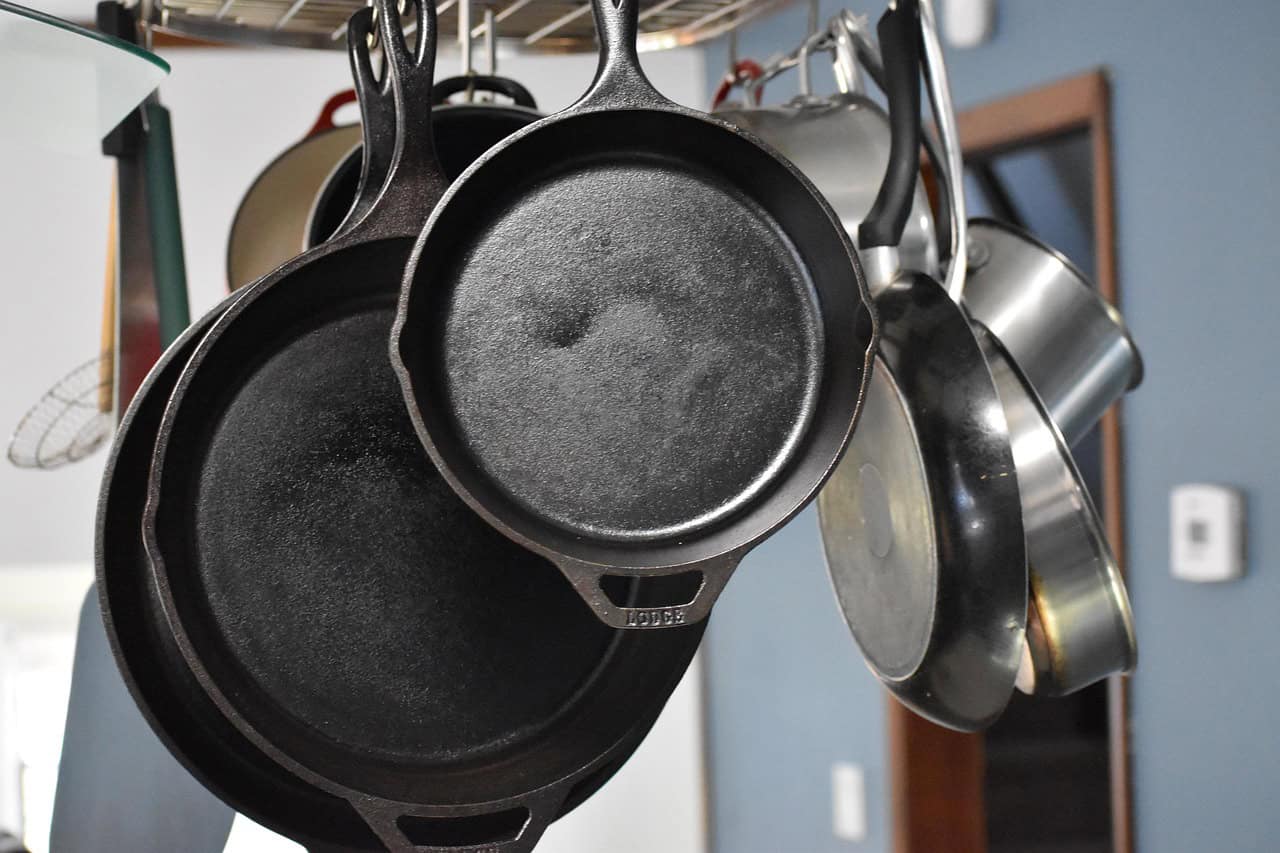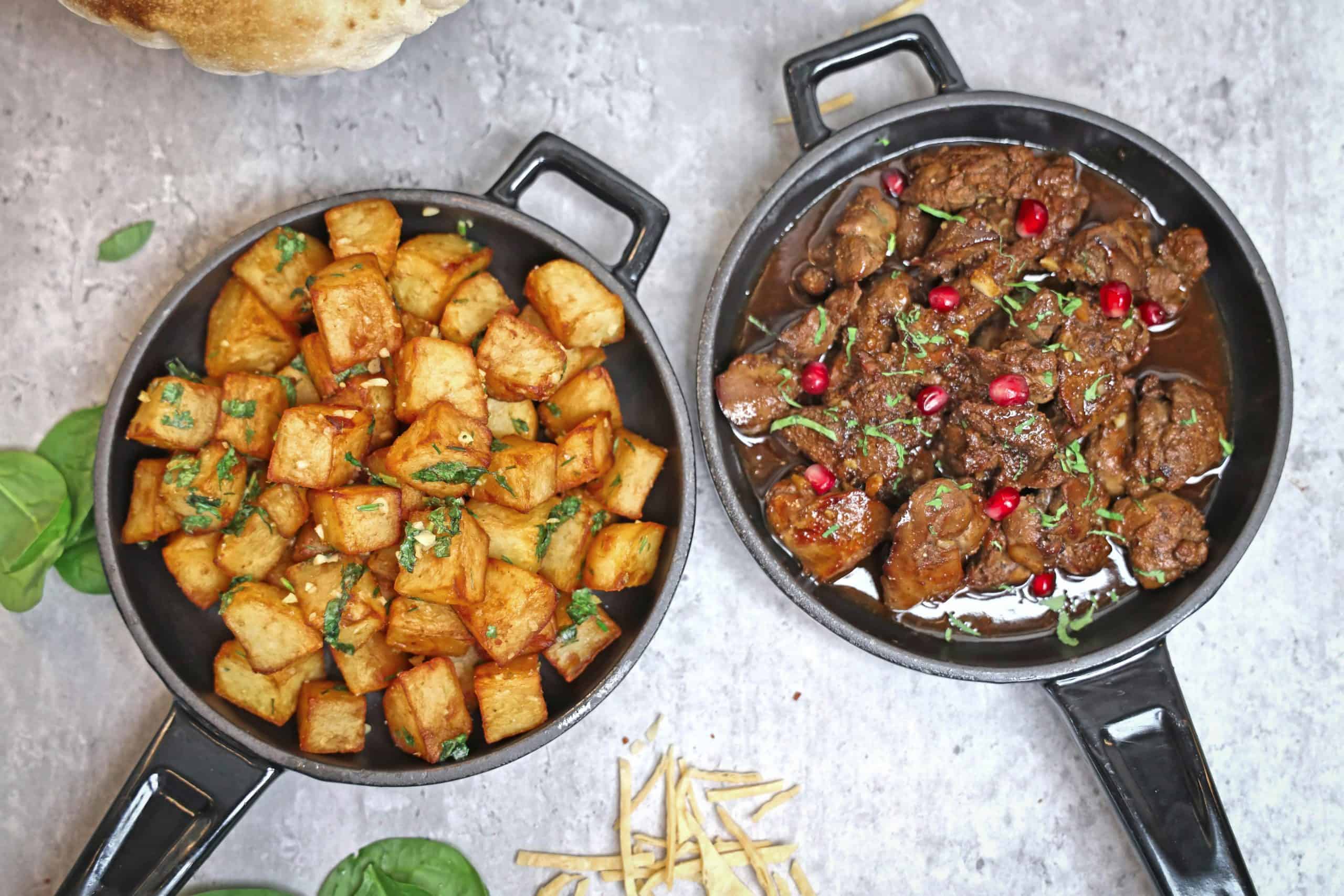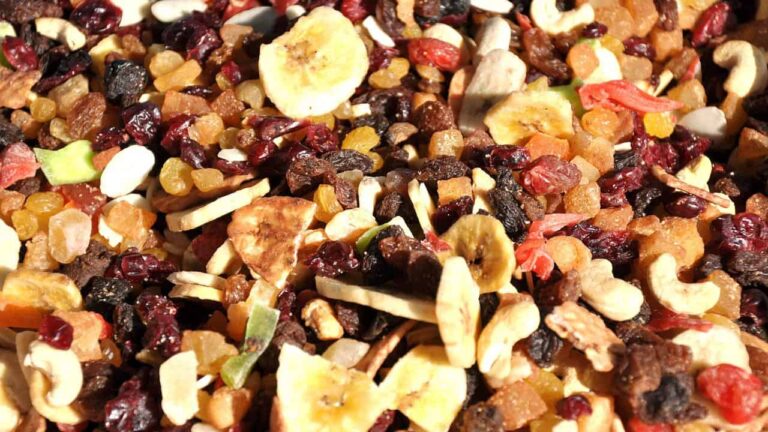Carbon Steel vs. Cast Iron: Which Pan is the Best Solution in the Kitchen?
Imagine you’re standing in the cookware aisle, torn between two heavy-duty contenders that look like they could survive a zombie apocalypse. On one side, there’s cast iron—the granddaddy of serious cooking that your great-grandmother probably used to whack intruders. On the other hand, carbon steel—the sleek European cousin that professional chefs whisper about in reverent tones.
Both promise to transform your cooking game, but which one deserves precious real estate in your kitchen? After spending countless hours testing, seasoning, and occasionally cursing at both materials, I’m here to settle this debate once and for all.
What Makes These Pans So Special?
Before we dive into the nitty-gritty, let’s understand what we’re dealing with. Both carbon steel and cast iron are essentially iron-carbon alloys, but the devil (and the cooking magic) is in the details.
Cast iron contains 2-3.5% carbon, making it the heavyweight champion of heat retention. It’s like that friend who takes forever to warm up to new people but then never wants the party to end. The higher carbon content creates that slightly rough, porous surface that develops into a naturally non-stick coating over time.
Carbon steel, meanwhile, keeps its carbon content closer to 2%, making it the athletic younger sibling. It heats up faster than cast iron and conducts heat more evenly, but still maintains that coveted ability to develop a slick, seasoned surface.
Heat Performance: The Great Showdown
Cast Iron: The Heat Hoarder
When it comes to heat retention, this is basically the cookware equivalent of a thermal battery. Once it gets hot (and yes, it takes its sweet time), it stays hot longer than your ex’s grudges. This makes it absolutely phenomenal for searing steaks, where you want that consistent, blistering heat to create a perfect crust. However, its heating pattern can be as uneven as a teenager’s mood swings. Hot spots are common, especially on smaller burners, which can lead to some interesting (read: frustrating) cooking experiences.
Carbon Steel: The Quick Change Artist
This one heats up significantly faster. It also distributes heat more evenly, reducing those pesky hot spots that can turn your perfectly planned meal into a game of culinary whack-a-mole. The faster heating and cooling also mean better temperature control, which is why professional chefs love tossing ingredients around in these pans like culinary wizards.
Weight and Maneuverability: David vs. Goliath
Cast iron is heavy. Really heavy. Using a large cast iron skillet is basically a free arm workout. While this weight contributes to its excellent heat retention, it can make simple tasks like flipping an omelet feel like an Olympic sport.
Carbon steel strikes a beautiful balance here. It’s substantial enough to handle high-heat cooking but light enough that you won’t need a chiropractor after making Sunday brunch. This makes it infinitely better for techniques that require pan movement, like sautéing vegetables or making the perfect French omelet.
Seasoning and Non-Stick Properties
Both materials require seasoning to develop their non-stick properties, but they behave differently in the process.
Cast Iron Seasoning: The Patient Game
They typically come pre-seasoned these days (thank goodness), but building up that mirror-like, slick surface takes time and regular use. The rougher surface means it takes longer to achieve that coveted non-stick quality, but once you get there, it’s incredibly durable.
Carbon Steel Seasoning: The Overachiever
They have smaller pores, which means they actually need less oil to achieve proper seasoning. Many professional chefs prefer it because it develops a slicker surface faster. Within a few months of regular use, a well-maintained carbon steel pan can become slipperier than a politician’s promise.
Cooking Applications: Where Each Pan Shines

Cast Iron’s Specialty Acts
They excel in applications where steady, consistent heat is king:
- Searing thick steaks and chops
- Baking cornbread and skillet cookies (hello, dessert in a pan!)
- Braising and slow-cooking dishes
- Deep frying (the heat retention keeps the oil temperature stable)
Carbon Steel’s Versatility Show
This is the Swiss Army knife of serious cookware:
- Perfect eggs and delicate fish (once properly seasoned)
- High-heat stir-frying and wok cooking
- Crepes and pancakes that actually release
- Professional-style sautéing with tosses and flips
Maintenance: The Reality Check

Both materials require more care than your average non-stick pan, but the maintenance isn’t as scary as internet forums make it seem.
Cast Iron Care
- Wash with soap and water (yes, soap won’t hurt it!)
- Dry immediately and thoroughly
- Apply a thin layer of oil while warm
- Avoid soaking or dishwasher
Carbon Steel Care
The maintenance routine is virtually identical. The key is developing the habit—think of it as a brief meditation ritual after cooking.
Durability: The Long Game
Both materials are built to outlast your kitchen, your house, and possibly civilization itself. Cast iron has the slight edge in pure durability—it’s practically indestructible. Carbon steel is incredibly durable, too, though it can be more susceptible to warping under extreme temperature changes.
Price Point: The Budget Reality
Cast iron wins the affordability contest hands down. You can get an excellent Lodge skillet for the price of a decent dinner out. Carbon steel typically costs more, especially for high-quality options, but it’s still reasonable compared to premium stainless steel or copper cookware.
The Verdict: Which Pan Wins?
Here’s the truth no one wants to admit: the “winner” depends entirely on your cooking style and priorities.
Choose cast iron if:
- You love slow, steady cooking methods
- Budget is a primary concern
- You don’t mind the extra weight
- You’re building a “forever” cookware collection
Choose carbon steel if:
- You want restaurant-style cooking techniques
- Weight and maneuverability matter
- You frequently cook delicate items like fish or eggs
- You’re willing to pay a bit more for versatility
The Plot Twist: Why Not Both?
If you’re serious about cooking (and have the storage space), consider this radical idea: get both. A cast iron pan for hearty, rustic cooking and a carbon steel pan for finesse work. They complement each other beautifully, like a culinary odd couple that somehow makes perfect sense.
Many professional kitchens stock both for good reason—they’re tools for different jobs, each excelling in its own domain.
The bottom line? Both will elevate your cooking game significantly over standard non-stick pans. Your choice ultimately comes down to whether you prioritize the steady, patient power of cast iron or the quick, versatile performance of carbon steel. Either way, you’re investing in cookware that will serve you (and possibly your grandchildren) for decades. Now that’s what I call a pan with staying power.







